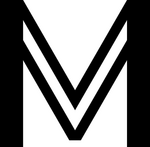Viafèra de Montecara
 | |
| Overview | |
|---|---|
| Owner | Montecaran state (96%) Paretian state (4%) |
| Area served | Montecara and adjacent areas in Luzela |
| Transit type | Commuter rail Light metro Tram Bus Ferry |
| Website | vm.mc |
| Technical | |
| Track gauge | 1,500 mm standard gauge 1,000 mm meter gauge |
| Electrification | 25 kV / 50 Hz AC overhead lines 1,500 V DC overhead lines 750 V DC overhead lines |
Viafèra de Montecara (VM) (Montecaran, Railway of Montecara), colloquially known as Vimo, is a majority state-owned public transit company based in Montecara. It was created by law on 1 December 1941 to operate Montecara's amalgamated urban rail network. It currently provides transit services in Montecara and under contract in cities around the world.
History
Rail transport in Montecara dates back to 1854, when the city-state’s first railroad was constructed from Porta Nuova to Gabalòn, a distance of 12 kilometers. The line carried cargo and passengers on trains powered by primitive steam-driven locomotives. A robust network of rails was developed over the following decades, with services mostly taking the form of interurbans that ran on dedicated right of way in the countryside and down city streets in built-up areas. A conversion process begun in 1935 was designed to integrate these disparate lines into a single network of interoperable, electrified passenger rail with occasional cargo service. Major construction was completed by 1939, and the system began full-capacity passenger operations in July of that year. The system has since been expanded in several phases, most recently with a 2.5-kilometer extension to San Teodòr in 2012.
Governance
VM is owned by the governments of Montecara (96%) and Paretia (4%). It is managed by a board of directors that includes representatives of the two national governments as well as the government of the constituent kingdom of Luzela.
Finances
Fares

VM uses an integrated ticketing model where tickets are valid for the entire system, regardless of mode, for a certain period of time.
Tickets are sold at vending machines at all rail stations and many bus stops, at ticket desks at major stations, at tobacconists' shops, via SMS and the VM mobile app, and by mail, but are not sold on board transit vehicles. Most residents of Montecara take advantage of the ability to use the Ùnivers card, the national identification card, as a transit pass that can be loaded with fares online or at ticket machines. All fare media use NFC technology to validate fares.
Real estate
VM owns a substantial portfolio of real estate, some of which it leases at a profit. Because its governing charter requires it to fully fund its domestic transit operations, including expenses on maintenance and capital, before paying out dividends, VM effectively uses rental income to subsidize rail and bus service. Major sources of rental income derive from air rights over its facilities, telecommunications purposes such as cellular telephone masts, and retail within and adjacent to transit stations.
Services
Viaurea
Metrovìa

Metrovìa is a light metro network made up of meter gauge lines, most of which were originally built as electric railways running between the city center and outlying settlements and port facilities. It runs underground in the city center and branches out to run on dedicated surface and elevated right-of-way in outlying areas. Stations are generally spaced between 500 and 1,500 meters apart, roughly equivalent to a 7- to 22-minute walk taking a direct route.
Tranvìa
Tranvìa is a tram–light rail network that runs on both surface streets and in some dedicated right-of-way.
Bus
VM operates two types of bus service: Autobùs, a typical transit bus service, and Corièra, which provides longer-distance limited-stop services between the urban center of Montecara and outlying communes, particularly those not well-served by rail.
Autobùs vehicles have all been low-floor since 2009. Certain crowded areas have dedicated lanes and signal priority that allow buses to maintain a relatively high speed compared to other traffic. VM is in the process of converting its entire Autobùs fleet to electric buses, with the goal of having a 100% electric fleet by 2022.
Corièra coaches are equipped with larger, more comfortable seats as well as a toilet and, in newer models, power outlets at every seat.
Ferry
VM's ferry service is branded as Vaporèt. The Montecaran state took over a number of unprofitable ferry lines in 1937, turning them into a single public marine transit company that would later become part of VM. The service currently operates routes across the Bay of Montecara, connecting areas that do not have direct links via bridges or tunnels.
Rolling stock
| Service | Image | Class | Built | Floor height | Top speed | Formation | Total capacity (seated + standing) |
Track gauge | Overall length | Width | Power |
|---|---|---|---|---|---|---|---|---|---|---|---|
| Metrovìa | 
|
CFP 213 | 1999–present | High-floor | 90 km/h | 3 cars (2 powered; 2 complete units can be combined) | 467 (128 seated + 339 standing) | 1,000 mm | 52 m | 2.75 m | 1,500 V DC overhead line |
| Tranvìa | 
|
CFP U100 | 2011–present | Low-floor (356 mm) | 70 km/h | 3, 5, or 7 cars | 129 (3 cars) 221 (5 cars) 306 (7 cars) |
1,000 mm | 18 m (3 cars) 30 m (5 cars) 43 m (7 cars) |
2.30 m | 750 V DC overhead line |